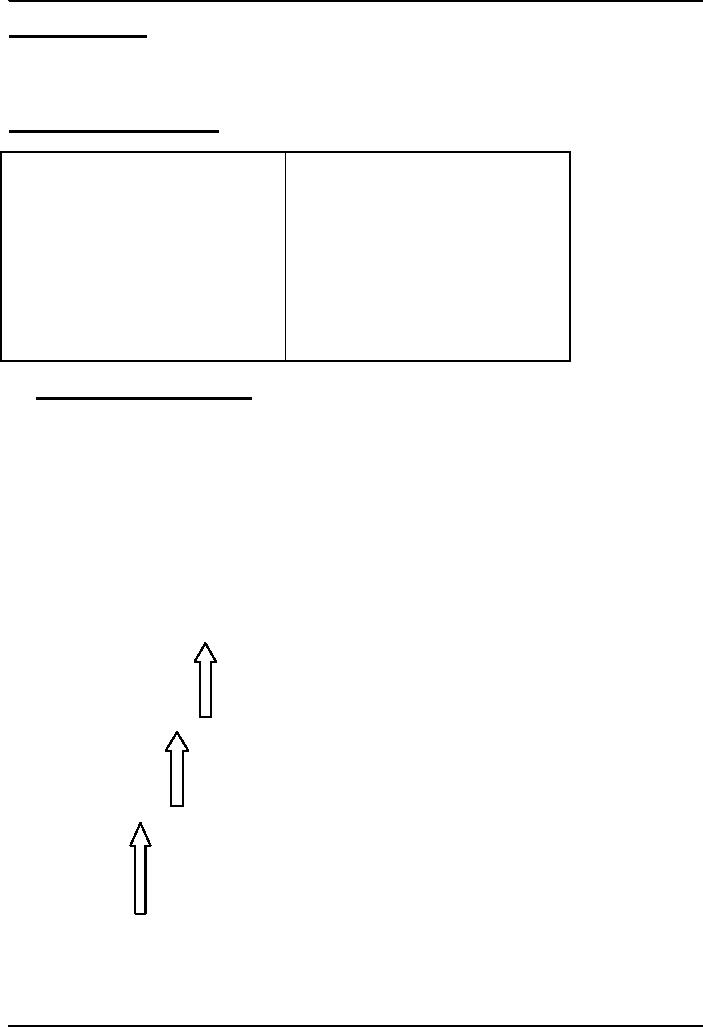 |

Introduction
to Computing CS101
VU
LESSON
19
PROGRAMMING
LANGUAGES
During
the last Lesson ...
We
continued our discussion on
algorithms that we had started
during the 16th
lecture
In
particular, we looked at the building
blocks that are used in
all algorithms
We
also discussed the pseudo
code and flowcharts for
particular problems
In
addition, we outlined the pros and
cons of those two
techniques
Last
time we discussed what to
implement
Today's
Lecture
Today
we are going to discuss the
tool that is used to
implement SW
To understand the
differences among low- & high-level,
interpreted & compiled,
and
structured &
object-oriented
programming languages
To understand the
role of programming languages in
computing
WHAT IS
PROGRAMING (CODING) ?
The
process of telling the computer what to
do
TYPES
OF PROGRAMS
Batch
Programs
Event-Driven
Programs
19.1
Batch Programs
These
are typically started from a
shell (or automatically via
a scheduler) and tend to follow a pattern
of:
Initialize
internal data
Read
input data
Process
that data
Print
or store results
Key
feature: No user interaction
with the computer while the program is
running
Programming
Language
A
vocabulary and set of
grammatical rules for instructing a
computer to
perform
specific tasks
19.2
Event-Driven Programs
Examples:
GUIs, microwave,
camera
The
system sends events to the
program and the program
responds to these as they
arrive.
Events
can include things a user
does - like clicking the
mouse - or things that the
system itself does -
like
updating the clock.
These
programs generally work as
follows:
Initialize
the internal data
Wait
for events to arrive
Identify
an incoming event and react
accordingly
Programming
Language
A
vocabulary and set of grammatical rules
for instructing a computer to perform
specific tasks
All
programs consists
of:
Sequence
of instructions
Conditionals
Loops
119

Introduction
to Computing CS101
VU
These
may contain:
Data
Input/output
(print, etc)
Operations
(add, divide, etc)
Examples
of Prog. Languages
Machine
Language
Perl
(1987)
Assembly
Language (1956-63)
VisualBasic
(1991)
LISP
(1956)
PowerBuilder
PL/1(1964)
Ada(1983)
BASIC
(1964)
C++
(1983-85)
Pascal
(1970)
QBasic
(1986 Java (1995)
Smalltalk
(1972)
JavaScript
C
(1972) Fortran (1957)
C#
(2001)
COBOL
(1959)
19.3
Types of Prog. Languages
High
level Programming Languages
Low
Level Programming Languages
High-level
programming languages, while
simple compared to human languages, are
more complex
than
the languages the uP
actually
understands, called machine languages
each different type
of
microprocessors
has its own unique machine
language lying between machine languages &
high-level
languages
are languages called
Assembly languages
Assembly
languages are
similar to machine languages, but
are easier to program in as
they allow a
programmer to
substitute names for
numbers
Machine
languages consist
of numbers only.
4th-generation
languages
High-level
languages
Assembly
languages
Machine
languages
Regardless
of what language you use,
you eventually need to
convert your program into a
language that
the computer
can understand
120

Introduction
to Computing CS101
VU
Two
ways for doing that:
-
compile the program or
-
interpret the program
Interpreter
is a
program that executes
instructions written in a high-level
language
An
interpreter translates high-level
instructions into an intermediate
form, which it then
executes. In
contrast, a
compiler translates high-level
instructions directly into machine
language
Compiled
programs generally run faster
than interpreted programs.
The
advantage of an interpreter, however, is
that it does not need to go
through the compilation
stage
during
which the whole of the high-level
code is translated into machine
instructions in one go.
This
process
can be time-consuming if the program is
long.
The
interpreter can immediately
execute high-level programs, without
waiting for the completion of
the
translation
process
The
choice of which language to use can
also depend on the:
-Type
of computer the program is to run
on,
-
Expertise of the programmer
Interpreters:
immediate response, but
execute code slowly.
Compilers:
Takes longer to compile, but
super-fast execution.
Both
interpreters and compilers are
available for most
high-level languages.
However,
BASIC
and
LISP
were
especially designed to be executed by an
interpreter.
Why
are there so many different
programming languages?
What
are the advantages of particular
languages?
The
question of which language is best is one
that consumes a lot of time
and energy among computer
professionals
Every
language has its strengths
and weaknesses
-Can a
single language have all the good
bits of other
languages?
-Is
there a perfect language?
-Do
some good features force a
language to also have bad
features?
-What
makes a feature good or
bad?
-What
makes a feature good or
bad?
FORTRAN
is a
particularly good language for
processing numerical data, but it
does not lend
itself
very
well to large business
programs
Pascal
is very good for writing
well-structured and readable programs, but it is
not as flexible as the C
programming
language
C++
embodies powerful object-oriented
features, but it is complex and difficult
to learn
What
changes
in the
field of computer languages can we expect
in the near future?
-Which
programming language should you
learn?
Should
you learn more than
one?
19.4
Programming SW Development
- SW
Design Methodology ?
The
set of (often flexible) rules and
guidelines a team of developers follow to
construct reasonably
complex
SW systems
19.5
Object Oriented Design
OO SW is
all about objects: a black
box which receives messages
& responds with those of
its own
An
object has 2 aspects:
State,
also termed as properties,
data
Example:
For the bicycle: color,
speed, pressure
Behaviors,
also termed as methods,
instructions
Example:
For the same object: accelerate(),
inflate()
In
traditional design, these 2 aspects have
been kept apart
121

Introduction
to Computing CS101
VU
The
designer starts with any component
(object) of the system; designs it as an
independent, self-
contained
system, and then moves to the design of
some other component . The
over-all system is
put
together
by fitting together a collection of
these components.
Key
feature: Details of the design of the component
are kept independent of the
over-all system.
Benefit:
It can be easily re-used in
other systems: design once; use
multiple times
19.6
Structured Design
Also
called top-down design
The
designer starts by first conceiving a
skeleton high-level design of the system,
and then starts
defining
features of that over-all design in an
ever-increasing detail
Making
small changes in the functionality of the
systems sometimes leads to
major re-design exercise
Structured design
emphasizes separating a program's data
from its
functionality
Separating
data from functionality
typically leads to SW that is
difficult to maintain & understand
-
especially
for large SW systems
19.7
Object-Oriented Languages
Programming
languages specifically designed to make
it easy to implement object-oriented
designs
Examples:
Smalltalk, C++, Java
Programming
Languages
http://www.wikipedia.com/wiki/Programming_language
What
is Object-Oriented Software?
http://catalog.com/softinfo/objects.html
VisualBasic:
Taming the Wooly
Mammoth
http://computer.org/software/so2000/pdf/s3016.pdf
During
Today's Lecture, We ...
To understand the
role of programming languages in
computing
To understand the
differences among low- & high-level,
interpreted & compiled, and structured
&
object-oriented
programming languages
Focus
of the Next Lecture:
The
SW Development Process
Development
process of reasonably complex SW systems
does not consist of "coding"
only
We
will become familiar with
the various phases of the process
that developers follow to develop
SW
systems
of reasonable complexity
122
Table of Contents:
- INTRODUCTION
- EVOLUTION OF COMPUTING
- World Wide Web, Web’s structure, genesis, its evolution
- Types of Computers, Components, Parts of Computers
- List of Parts of Computers
- Develop your Personal Web Page: HTML
- Microprocessor, Bus interface unit, Data & instruction cache memory, ALU
- Number systems, binary numbers, NOT, AND, OR and XOR logic operations
- structure of HTML tags, types of lists in web development
- COMPUTER SOFTWARE: Operating Systems, Device Drivers, Trialware
- Operating System: functions, components, types of operating systems
- Forms on Web pages, Components of Forms, building interactive Forms
- APPLICATION SOFTWARE: Scientific, engineering, graphics, Business, Productivity, Entertainment, Educational Software
- WORD PROCESSING: Common functions of word processors, desktop publishing
- Interactivity to Forms, JavaScript, server-side scripts
- ALGORITHMS
- ALGORITHMS: Pseudo code, Flowcharts
- JavaScript and client-side scripting, objects in JavaScript
- Low, High-Level, interpreted, compiled, structured & object-oriented programming languages
- Software Design and Development Methodologies
- DATA TYPES & OPERATORS
- SPREADSHEETS
- FLOW CONTROL & LOOPS
- DESIGN HEURISTICS. Rule of thumb learned through trial & error
- WEB DESIGN FOR USABILITY
- ARRAYS
- COMPUTER NETWORKS: types of networks, networking topologies and protocols
- THE INTERNET
- Variables: Local and Global Variables
- Internet Services: FTP, Telnet, Web, eMail, Instant messaging, VoIP
- DEVELOPING PRESENTATIONS: Effective Multimedia Presentations
- Event Handlers
- GRAPHICS & ANIMATION
- INTELLIGENT SYSTEMS: techniques for designing Artificial Intelligent Systems
- Mathematical Functions in JavaScript
- DATA MANAGEMENT
- DATABASE SOFTWARE: Data Security, Data Integrity, Integrity, Accessibility, DBMS
- String Manipulations:
- CYBER CRIME
- Social Implications of Computing
- IMAGES & ANIMATION
- THE COMPUTING PROFESSION
- THE FUTURE OF COMPUTING
- PROGRAMMING METHODOLOGY
- REVIEW & WRAP-UP of Introduction to Computing